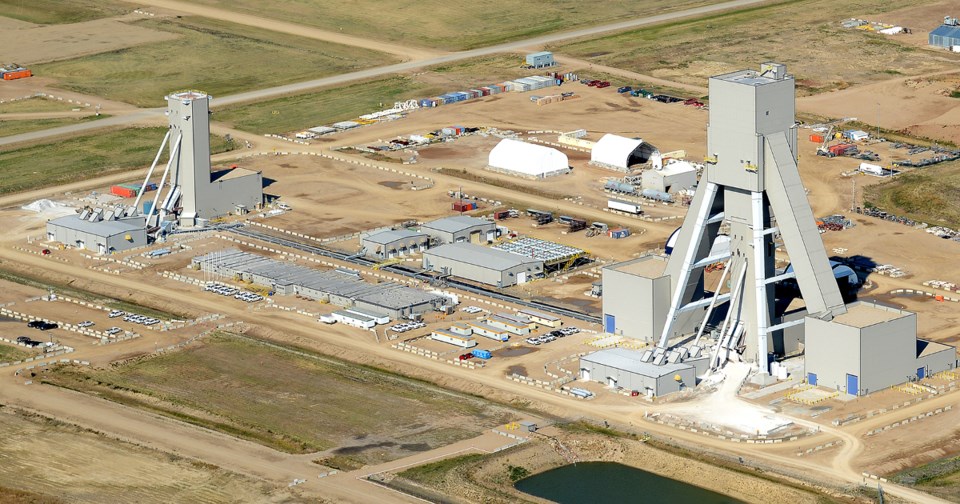BHP’s board of directors announced that they will invest $7.5 billion (US$5.7 billion) to complete the first stage of the mine.
“Now that we've got the approval, we can continue to proceed with the key design, all of our purchasing and key contracting work that we need to do to maintain progress,” said Simon Thomas, BHP’s vice-president of projects, potash.
The first order of business is to complete the two shafts. The service shaft goes down one kilometre, while the production shaft goes down 975 metres.
Thomas said they have to finish the permanent liner that protects the shafts from elements like water. He said the company is about 300 meters from the surface with the liner.
“We are reasonably well progressed with our engineering to support the underground development, the work down the shaft and to establish the mining areas,” Thomas said. “That underground component will commence early in 2022.”
The shafts will be fitted with their final hoisting capability, communications and other infrastructure. The mining footprint will be established, mining rooms will be created and equipment will be brought down to establish the mining systems.
Meanwhile, the surface, at this point of time, has headframes and hoist houses; a 2,586-bed camp for workers; storage for liner materials, concrete, aggregate, sand and water; and office facilities.
“Now what will happen is we'll start to construct proper electrical infrastructure – switch rooms and substations, start to clear the area for what will be the future processing facilities,” Thomas said.
Over 2022, BHP will be working with engineers to develop plans for the surface facilities.
“You'll start to see significant surface activity happening in the early part of 2023,” Thomas said.
The surface infrastructure will include a processing facility, a product storage building, and a continuous automated rail loading system.
A rail spur to connect the site to Canadian National and Canadian Pacific railways will also have to be built to allow BHP to send the product to Delta, B.C. for export.
The first ore is expected to come from the mine in 2027, six years from now.
“A little way off, I know, but there's a lot to be done,” Thomas said.
After that, there will be a ramp up period of two years.
When complete, the first stage is expected to produce approximately 4.35 million tonnes of potash per annum.




